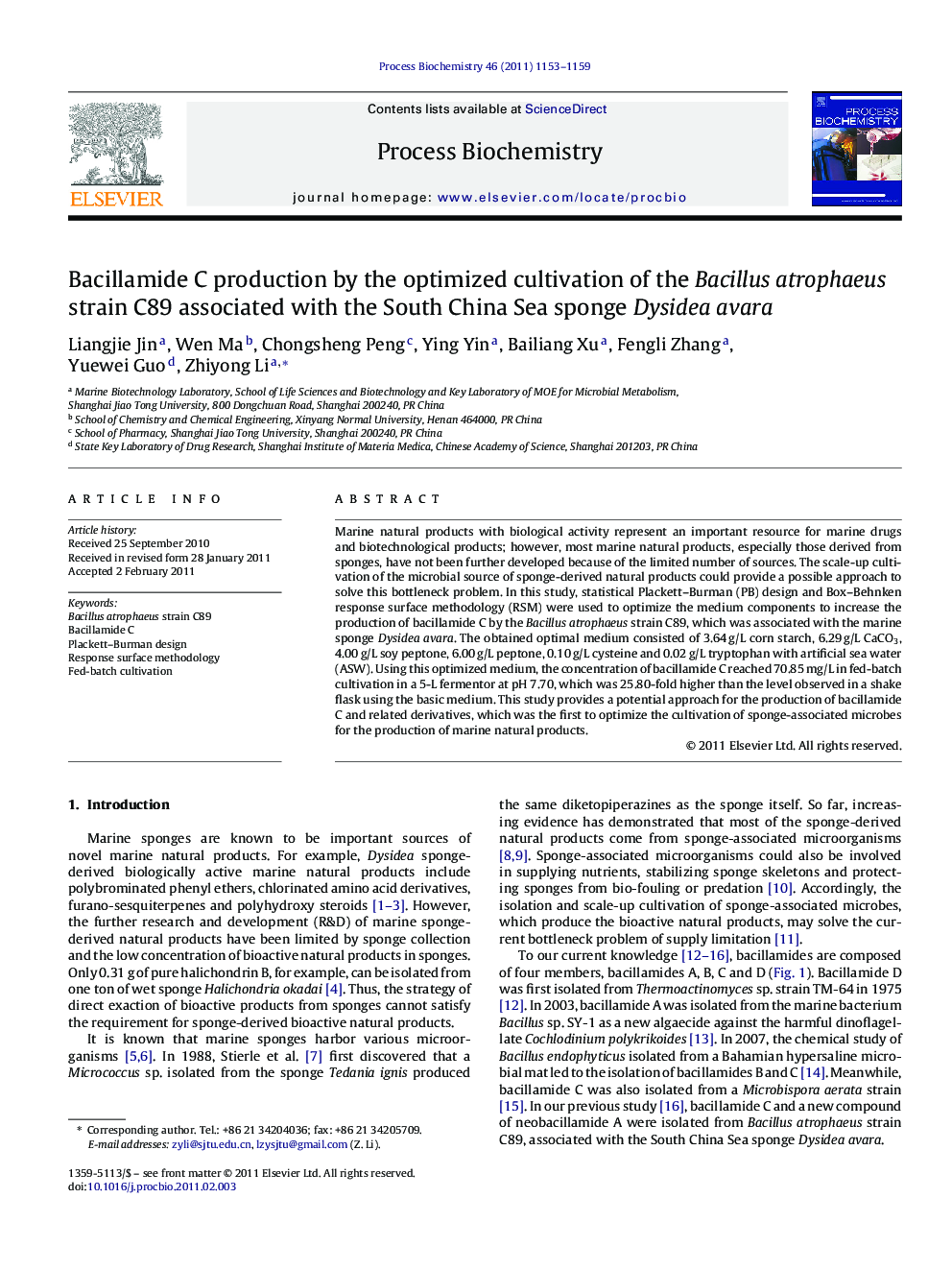| Article ID | Journal | Published Year | Pages | File Type |
|---|---|---|---|---|
| 10235636 | Process Biochemistry | 2011 | 7 Pages |
Abstract
Marine natural products with biological activity represent an important resource for marine drugs and biotechnological products; however, most marine natural products, especially those derived from sponges, have not been further developed because of the limited number of sources. The scale-up cultivation of the microbial source of sponge-derived natural products could provide a possible approach to solve this bottleneck problem. In this study, statistical Plackett-Burman (PB) design and Box-Behnken response surface methodology (RSM) were used to optimize the medium components to increase the production of bacillamide C by the Bacillus atrophaeus strain C89, which was associated with the marine sponge Dysidea avara. The obtained optimal medium consisted of 3.64Â g/L corn starch, 6.29Â g/L CaCO3, 4.00Â g/L soy peptone, 6.00Â g/L peptone, 0.10Â g/L cysteine and 0.02Â g/L tryptophan with artificial sea water (ASW). Using this optimized medium, the concentration of bacillamide C reached 70.85Â mg/L in fed-batch cultivation in a 5-L fermentor at pH 7.70, which was 25.80-fold higher than the level observed in a shake flask using the basic medium. This study provides a potential approach for the production of bacillamide C and related derivatives, which was the first to optimize the cultivation of sponge-associated microbes for the production of marine natural products.
Related Topics
Physical Sciences and Engineering
Chemical Engineering
Bioengineering
Authors
Liangjie Jin, Wen Ma, Chongsheng Peng, Ying Yin, Bailiang Xu, Fengli Zhang, Yuewei Guo, Zhiyong Li,
